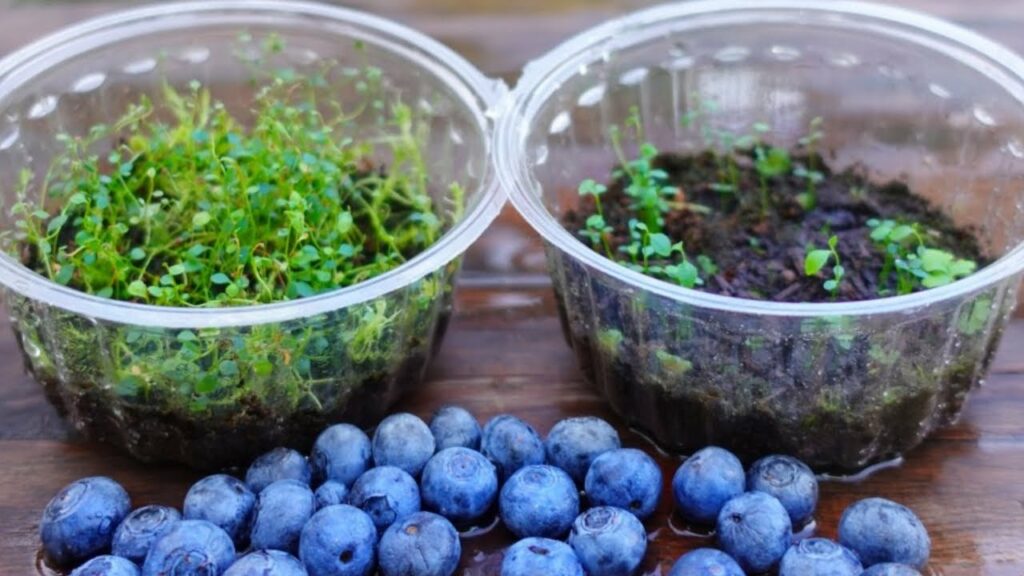
Growing blueberry plants from store-bought blueberries can be challenging because the berries you buy are generally cultivated for eating, not planting. However, with patience and proper care, it’s possible to grow blueberry plants from seeds. Here’s how to do it:
Step 1: Extracting Seeds
-
Choose Ripe Blueberries: Pick ripe and healthy blueberries, as they’re more likely to have viable seeds.
-
Prepare the Berries: Mash the blueberries gently to expose the tiny seeds inside without crushing them.
-
Extract the Seeds: Mix the mashed blueberries with water in a small container. Viable seeds will sink to the bottom while the pulp and dead seeds float. Pour off the water and floating debris, then collect the seeds from the bottom.
Step 2: Stratification
-
Cold Treatment: Blueberry seeds need a period of cold stratification to break dormancy. Mix the seeds with moist peat moss or sand and seal them in a plastic bag.
-
Refrigerate: Store the bag in the refrigerator for about 90 days. This simulates winter conditions and helps initiate germination.
Step 3: Planting
-
Soil Preparation: After stratification, prepare a small pot with a mix of peat moss and sand, which provides the acidity blueberries prefer.
-
Sowing Seeds: Sow the seeds on the surface of the moist soil mix. Do not cover the seeds with soil as they need light to germinate.
-
Environment: Place the pot in a warm, bright area but out of direct sunlight. Keep the soil moist by misting with water regularly.
Step 4: Germination
-
Waiting Period: Blueberry seeds can take several weeks to germinate. Be patient and keep the soil consistently moist.
-
Seedling Care: Once the seedlings appear, continue to keep them in a light, warm place. When they develop their second set of leaves, they can be gently transplanted into individual pots with a soil mix suitable for acid-loving plants.
Step 5: Transplanting
-
Outdoor Transition: Blueberry plants thrive in well-drained, acidic soil with a pH of 4.5 to 5.5. Before transplanting outdoors, harden off the plants by gradually exposing them to outdoor conditions over a week.
-
Planting Location: Choose a sunny spot with protection from harsh winds. Space the plants about 4-5 feet apart to allow for growth and air circulation.
Step 6: Ongoing Care
-
Watering: Blueberries require consistent moisture. Water them regularly to keep the soil from drying out but avoid waterlogging.
-
Mulching: Use pine bark, sawdust, or straw to mulch around the plants. This helps retain moisture, suppress weeds, and maintain soil acidity.
-
Fertilizing: Use an acid-forming fertilizer suitable for azaleas or rhododendrons in early spring and again in late spring.
Step 7: Harvesting
-
Fruit Production: It may take several years before your plants produce fruit. Typically, blueberry bushes start to bear fruit in their third or fourth year.
Growing blueberries from seeds is a long process but rewarding when you finally get to harvest your own berries. With care and attention, your blueberry plants can thrive and produce fruit for many years.




